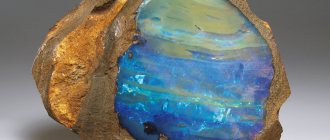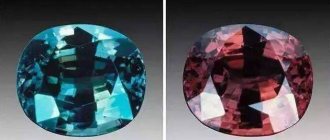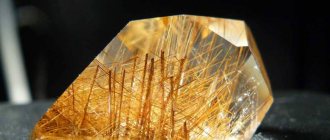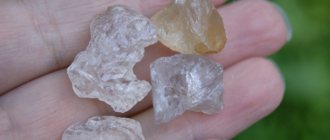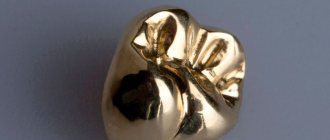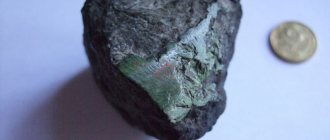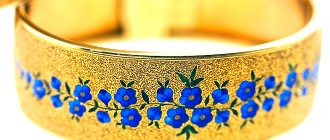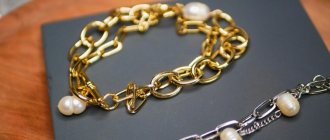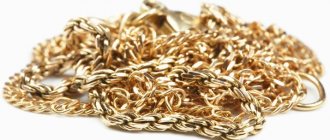When choosing a bracelet or necklace made of round mother-of-pearl beads, you need to first ask whether pearls are right for you. A mineral of organic origin can decorate every woman and harmonizes with almost any outfit, but does not always match the horoscope of its owner. This explains the contradictory properties attributed to one of the most valuable seafood.
Silver jewelry with pearls (go to the SUNLIGHT catalog)
Why is it that for some people pearls are a talisman and a talisman that attracts good luck, while for others it only brings disappointment and makes them depressed? The answer to this question can be found by understanding the magical properties of the gemstone, to which all women are partial.
Physical and chemical properties
Pearls consist of nacre, which is an aggregate of the organic horny substance conchiolin and calcium carbonate (usually in the form of the mineral aragonite). The stone is not very hard and quite brittle. May be in different colors. Its brilliance and play of colors are explained by the wavy surface of mother-of-pearl. It is not a mineral, but is classified as a precious stone.
| Formula | Conchiolin and aragonite |
| Color | Various, often white, milky and silver, less often cream, pink, blue, gold, green, dark gray, light blue, black. |
| Shine | Pearl |
| Hardness | 3-4 |
| Transparency | Often opaque, less often slightly translucent |
| Strength | Fragile |
| Kink | Shellish |
| Cleavage | Absent |
| Density | 2.60-2.78 g/cm3 |
| Refractive index | For light varieties - 1.520-1.660, for dark and black varieties - 1.530-1.690 |
Caring for your jewelry
Organic origin makes it mandatory to have a reverent attitude towards pearls. Time is inexorable to him, just as it is to a person - an aging pearl loses its beauty, loses its luster, dries, flakes.
Stones are contraindicated:
- increased humidity or dryness;
- contact with human sweat;
- interaction with cosmetics, household chemicals, fat.
When cared for, a gemstone can last up to two centuries.
The process of pearl formation
Natural processes are sometimes striking in their simplicity and complexity at the same time. This is how pearls are formed. On the one hand, the production of mother-of-pearl by a mollusk is its protective function, on the other hand, it is a way to create stunning jewelry. In more detail:
- The mollusk lives in its shell and develops.
- A certain irritant gets into its confined space, which can harm the health of the mollusk. It could be a grain of sand, a shell fragment or a piece of seaweed.
- The mollusk begins to defend itself - it produces nacre and covers the irritant with it layer by layer.
Thus, inside each natural pearl there is a grain of sand, a shell fragment or other tiny particle of marine debris.
The longer the pearl sits in the shell, the larger it will be when removed.
Favorable time to buy
Astrologers advise purchasing magic pearls in the middle of the lunar phase - the full moon and three days after it will allow you to feel a kinship with the power of sea magic or feel a sharp rejection.
Esotericists warn: only paired sets (for example, a ring and earrings) from people close in blood or spirit are accepted as gifts. Gifts from strangers will bring grief and harm your health.
Colors and varieties
In the minds of most people, pearls are white or milky shiny balls. In fact, there are many varieties of it. Pearls of the following colors are found in nature:
- White is a classic option.
- Lactic.
- Cream.
- Pink.
- Silver.
- Black.
- Light and dark green.
- Blue.
- Other shades.
The following types of natural pearls, grown by mollusks without human intervention, are known all over the world:
- River. Pearls have a diameter of no more than 7 mm, spherical or elliptical in shape, white, gray, yellowish or cream in color.
Freshwater pearls 5 mm
- Oceanic. Pearls are always large in size, grown by mollusks that live in warm bays of the oceans. Colors can be different - white, milky, silver, cream, pink and green-black.
Ocean pearl
- Freshwater. Pearls develop in the shells of mollusks that live in fresh water. Moreover, their number in one sink can reach from 5 to 25 pieces, hence the lower cost of this type. Pearls are usually small in size and round in shape, silvery white or milky in color.
Freshwater pearls
- "King". This is the name given to very large pearls (up to 22 mm) of the highest quality (they have a thick layer of nacre), grown only in the South Seas.
Pearl "King"
- "Mabe." Blister pearls have a hemispherical shape, obtained as a result of the characteristics of cultivation. Such pearls do not grow in the mantle of the mollusk, but on the valve of the shell. Colors include silver, smoke, metallic grey, dark green and shiny black.
Pearls Mabe
- "Baroque". Pearls got their name from their irregular shape (translated as “bizarre”). This also includes varieties of “monsters” and “paragons”, shaped like figures of animals and people. This type of pearl is quite inexpensive, since “fancy” pearls are considered defective jewelry, although talented craftsmen create amazing jewelry from them.
Baroque Pearl
Certain varieties of pearls can grow either independently in nature or be cultivated by humans. These include baroque, freshwater and other types.
Among the cultivated varieties, the most popular are:
- "South Sea". The most expensive pearl in its group. It comes in white, silver and gold. It has the thickest pearlescent layer. Always large and high quality.
- "Tahiti". Round pearls of medium and large size (up to 12 mm), grown near the Polynesian islands. The colors are predominantly dark - from silver-gray to black.
- "Akoya." Medium-sized pearls (up to 14 mm), grown in sea water. The color range is varied, only blue ones are not found.
- "Kasumi." An exotic Japanese variety that can have any color, including gold and purple.
The most famous artificial variety is the Mallorca pearl. It is produced in a Spanish factory located on the island of the same name. The growing process is the same as in nature, but shellfish are not involved in it. A special technology allows you to create a perfectly round pearl in just one month.
Pearls of Mallorca
In terms of aesthetic and other properties, Mallorca pearls are not inferior to natural and cultured pearls, but are much cheaper. They have practically no magical or healing properties.
Mining locations
Pearls are obtained from the shells of marine and freshwater mollusks, more often bivalves (mussels, etc.).
Sea “wild” pearls are found in:
- Persian Gulf;
- Gulf of Mannar;
- Red Sea.
For warm countries washed by the ocean or sea, the profession of pearl diver was traditional. But it is associated with a risk to life, which is why shellfish plantations are now being cultivated in many countries.
There are pearl plantations:
- off the coast of Japan and in some lakes of this country;
- in Burma (in the Bay of Bengal and the Andaman Sea). Burmese pearl is one of the best in the world.
Cultured pearls are no different from wild ones. The core of the future pearl is simply placed into the shell by specialists. After this, under their supervision, the invertebrate grows (and grows the pearl) for several years.
The largest jewel found in a mollusk shell is the “Pearl of Allah.” Its weight is 6.5 kg , and the weight of the mollusk is 300 kg . This jewel has an oblong shape and impressive dimensions - 24 x 16 cm .
Pearl is also found in clean, large rivers of Europe, Asia, and North America. Freshwater pearls are mined in:
- Russia;
- Germany;
- China;
- USA.
Interesting fact. One day, a South Korean resident bought pearl shells for a traditional Korean dish for 60 cents In one of the shells he discovered a rare black pearl with a diameter of 1.5 cm . It was valued at $60,000 .
Pearl fishing
Humanity has been engaged in pearl fishing for hundreds, or even thousands of years. To get just a few pearls, divers had to open a huge number of mollusk shells.
This is interesting!
According to scientists, humanity discovered the first pearls completely by accident. This happened about 4 thousand years ago, when fishermen caught a large “harvest” of edible bivalves in the Gulf of Manara. They did this solely to replenish their provisions. The pearls found in the shells amazed the fishermen with their beauty. Other people also learned about the unusual find. Within a few years, pearl mining became targeted and popular. This rapid development of events is due to the fact that pearls do not need to be processed and they immediately began to be used as jewelry.
Today, the main suppliers of pearls are the Persian Gulf and the Red Sea. Pearls are also mined off the coast of Sri Lanka, as well as in Japan, where this is done by ama (“man of the sea”) - divers (mostly ladies) hunting for algae and mollusk shells. The countries of North America, China, Germany and Russia can boast of the presence of freshwater pearls.
Pearls can be grown artificially. In this case, it is called cultivated. The process of pearl cultivation occurs as follows:
- An oyster that is three years old is carefully opened and a foreign body is placed inside the shell.
- The mollusk is returned to its familiar environment in which it grows the pearl.
- The whole process takes about 2-3 years and is completely controlled.
This is interesting!
The pearl plantation appeared at the end of the 19th century at the instigation of Kokichi Mikimoto, who in 1983 grew his first semicircular pearl. After 1.5 decades, the Japanese patented his technology and made it world famous.
Until now, the main supplier of cultured pearls is Japan. There are pearl nurseries both in the seas and oceans near its shores, and in lakes inland.
Story
People have known what pearls are since ancient times.
It has long been found in the shells of marine and freshwater mollusks. This stone is the most ancient jewel on our planet. It is believed that it was first discovered by accident while catching edible bivalves. Scientists believe that this happened in the waters of the Gulf of Mannar about 4,000 years ago .
The gem began to be used as jewelry and even as a monetary equivalent.
He was highly valued in the East - from China to North Africa, and was adored by the queens of ancient times - Semiramis, Cleopatra and others. The importance of pearls was so great at that time that Cleopatra considered earrings with two large pearls the most valuable of her jewelry.
This stone was highly valued in countries with access to the sea. They decorated statues of gods and heroes and were awarded for military exploits.
On the famous Monomakh's hat, pearls shimmer softly among other gems, and it is crowned with a cross with pearls.
Since the Middle Ages, these stones have been used to decorate crosses, icons, and robes of clergy, since among Christians pearls are a symbol of infallibility and purity.
The Russian word “pearl” comes from the Chinese name for this stone - “zhen zhu”. In Rus' it appeared through the Volga-Bulgar and ancient Turkic languages.
In most European languages, the name of this gem has the Latin root perl. It comes from a now unused word that denoted a specific type of mollusk.
In Russian, nacre is the outer coating of pearls.
Artificial pearls
The spread of artificial pearls is associated with the high cost of real ones:
- In the 15th and 16th centuries, among those who could not afford natural pearls, “Roman pearls” - a glass ball with paraffin inside - were especially popular.
- A little later, they learned how to make “pearl essence,” which is a special composition based on fish scales. Glass balls were dipped into it several times, sintering them in a furnace after each dip. As a result, the balls received a pearlescent color and shine.
- In the second decade of the 20th century, a new shell pearl technology appeared in America. Its essence is the imitation of pearls using mother-of-pearl cores coated with varnish.
Imitation pearls are an excellent option for those who want to have pearl jewelry, but absolutely do not have the money for it. But unscrupulous jewelers, in pursuit of increasing profits, try to sell fakes under the guise of natural pearls. Therefore, it is important to be able to distinguish imitations from originals; how to do this is described in detail below.
Signs and beliefs about pearls
Representatives of the fair sex often have many questions when purchasing jewelry with one or another precious stone, for example, who the name is suitable for or what it means for a woman, whether it can be given as a gift.
Experts have answers to such questions. For example, it is believed that pearl jewelry is ideal for women with the names Lilia, Claudia, Valentina, Inna, Irina, Sofia and Margarita. There is an opinion that the stone is wonderful for women in terms of its energy and is happy to share its wisdom with them, contribute to their rejuvenation, and strengthen family ties.
Today, giving pearl jewelry is becoming quite popular, as the mineral symbolizes purity, innocence and wisdom. In this case, it is not necessary to be guided by the date of birth of the birthday girl. It is good to give pearls in pairs with some kind of jewelry, for example, a pearl set of pendants and earrings or a necklace with a ring would be an appropriate gift.
The magical properties of pearls
Water itself is a powerful element, and anything born and raised in it receives special magical powers. Pearls can:
- Protect their owners while traveling on water.
- To relieve all kinds of suffering - the consequences of betrayal, disappointment and unhappy love, to cleanse the soul of its owner from all this, opening it to new impressions.
- Protect from negative influences of any kind.
There is an opinion among magicians that if a pearl becomes cloudy, darkened or cracked, it means that the person has been subjected to a negative influence from the outside. Another possible reason for the stone to deteriorate on its own is the risk or initial stage of a serious illness.
- Grant prosperity in family life.
- Rejuvenate both the body and soul of its owner.
- To bind one person to another with strong fiery feelings.
- Feed energetically (or, conversely, suck energy).
Wearing pearls is indicated only for people with a strong character and a pure soul. Otherwise, pearls will not help, but will even prevent them from carrying out their “bad” deeds.
- Help a person achieve what he wants, make him more respected and successful.
- Attract wealth into the life of your owner, make him financially independent, but on condition that he does not forget to share with those in need. Otherwise, the pearl will also quickly take back what it gave.
Compatibility with other stones
Pearls belong to the element of Water, so they go well with other “water” gems:
- moonstone;
- opal;
- emerald;
- alexandrite;
- aquamarine.
Although usually the stones of Water and Earth are energetically compatible, it is believed that pearls do not like to coexist with stones of the Earth element, especially cacholong, jasper, chalcedony, and morion.
Partnership with Air stones (except sapphire) is allowed: uvarovite, amethyst, topaz, chrysoprase, hyacinth, smoky quartz.
Pearls cannot stand proximity to “fire” stones, especially with:
- diamond;
- ruby;
- pomegranates (including greenish grossular).
Medicinal properties
Pearls are not deprived of healing power. He is capable of:
- Calm and have a general beneficial effect on the nervous system.
- Restore memory and improve concentration.
- Cure diseases and restore liver and kidney functions.
- Normalize blood pressure - raise it at low values, lower it at high values.
- Calm even severe headaches.
- Solve age-related and other skin problems - cleanse, nourish, rejuvenate, improve color, for which “pearl essence” (pearl powder) is used.
- Strengthen hair and nails.
- Improve a person’s overall well-being by relieving fatigue and feeding him energy.
Historical reference
According to scientists, the first pearls were discovered in the shells of bivalve edible mollusks caught in the waters of the Gulf of Mannar 4,000 years ago.
The age of the oldest pearl jewelry discovered during archaeological excavations in Susa is 4.5 thousand years.
As legend has it, one of the secrets of the incomparable beauty of the Egyptian queen Cleopatra was that she drank a glass of wine every day, in which a large pearl was dissolved.
In memory of the miraculous drink, guests of the modern Japanese hotel "Otani" are offered to try the "Pearl" cocktail: along with a glass of wine, they receive a pearl lying on a rose petal.
The rulers of ancient states used pearls to regulate interstate relations: by presenting each other with expensive jewelry, they not only showed their affection, but also demonstrated their own wealth.
Portrait of Empress Maria Feodorovna in a pearl headdress by Ivan Kramskoy (1880s) St. Petersburg, State Hermitage Museum
Alexander the Great, who became the owner of countless treasures obtained as a result of his campaigns in the East (this happened in the 4th century BC), laid the foundation for a pearl fever that lasted for two centuries and made pearls incredibly popular among the nobility of that time.
In ancient China, a pearl adorned on the cap of every nobleman emphasized his high status.
Pearls arrived in ancient Rus' from China and began to be widely used to decorate clothing, household utensils and icon frames.
Prince Svyatoslav, as chroniclers testify, wore a pearl earring in one ear. Ivan the Terrible's robe, embroidered with pearls, amazed foreign ambassadors with its beauty and wealth.
They were also surprised by the fact that peasant women in some provinces wore pearl beads and headdresses generously embroidered with river pearls for the holiday.
In medieval Europe, icons, church utensils, and priestly robes were decorated with pearls.
Talismans and amulets
Pearls, born and grown for decades in the depths of the sea, have absorbed all the energy of the water element, and therefore amulets and talismans with them have powerful magical powers.
The main belief, which is quite old, associates the whiteness of pearls with the purity and innocence of the bride. Therefore, it has long been customary in Rus' for parents to give the bride a pearl set for her wedding.
It was also believed that a single piece of pearl jewelry could bring disaster, and it was important to give a paired set, for example, a necklace and bracelet, earrings or a ring.
Parents believed that their daughter, adorned with pearls for her wedding, would always be happy in her family life, would retain her purity and beauty throughout her life, and her husband would never grow cold towards her.
In European countries, the tradition of tying the hands of those getting married with a string of pearls has been preserved to this day. It is believed that in this case their hearts will be united forever, and the flame of love will never go out.
Some peoples, on the contrary, do not recommend wearing pearls to a wedding, as they supposedly attract tears. However, at weddings, someone always cries and these are most often tears of joy.
Chinese grooms use pearl jewelry to propose marriage to their chosen ones. If a girl accepts a gift, it means there will be a wedding!
You can only accept pearls as a gift from the closest and most sincere people who were not their owners, but bought them to use as a gift. Otherwise, pearls can bring with them misfortunes and disappointments of previous owners, as well as evil intentions and wishes of the giver.
It would be nice to have jewelry with pearls for businessmen going to business meetings and negotiations. Pearls are a symbol of wealth, which they attract to themselves. Therefore, profitable deals with them are concluded easier and faster.
It is advisable for creative individuals to avoid prolonged interaction with pearls, as they can completely erase the boundaries of their imagination. They will begin to confuse the real world with the fantasy world, they may forget who they really are and turn into clients of psychiatric clinics for a long time.
Pearls love specific people who are strong in spirit and know what they want. At the same time, a person’s thoughts and conscience must be pure, otherwise the pearl, which is demanding, fair and irreconcilable with any manifestations of evil, can harshly punish the “guilty”.
Pearls have a greater feminine energy, so if they are able to forgive women for their mistakes in the past, then envious and dishonest men should not even try to make friends with pearls.
Pearls give ladies youth and health, femininity and beauty, it teaches them to be wiser and calmer, more tolerant and tender like a mother. Irina and Margarita, Sophia and Safia, Claudia and Valentina, Inna and Lilia will receive the greatest support from the pearls.
Who is suitable according to their zodiac sign?
Astrologers believe that pearls are not suitable for all people. He has the greatest compatibility (but not ideal) with representatives of the zodiac signs, which are protected by the water element.
Zodiac signs of the element Water
- Cancer. According to the horoscope, it is compatible with the energy of pearls. The gem will bring peace of mind and distract you from sad thoughts. It is useful for Cancer to often look at a mother-of-pearl stone.
If you notice that after communicating with a gem, sadness does not go away, it is better to take a break and put the jewelry in the box. Otherwise, pearls can lead to depression.
- Scorpion. Pearls are suitable for this zodiac sign, but only black ones. You only need to wear it occasionally. Black pearls will help Scorpio shine with intelligence. But the strong energy of this sign can destroy the energy of the stone, and then many problems will arise in love, business, and everyday life.
- Fish. A mother-of-pearl gem is ideal for this zodiac sign. A talisman or simply a decoration made from it will promote prosperity, longevity, and bring happiness. The ability to foresee the future will appear. A pearl amulet will protect you from rash actions, the “evil eye,” and the torments of unrequited love. The ring will protect Pisces from thieves and dubious transactions.
Zodiac signs of the element of Fire
- A lion. Its solar energy is not compatible with the lunar energy of pearls. But sometimes you can wear expensive varieties of this stone in order to reduce your temper and gain protection from ill-wishers.
- Aries. He can also wear expensive pearl jewelry if he wants to become more reasonable. But at work it is not appropriate - otherwise the owner will be annoyed by everything.
- Sagittarius. If you want to extend the “white” streak in life, you can wear pearls. But not all types are suitable; you need to find the right energy type.
Air element zodiac signs
They can wear such jewelry, but with caution and not for long.
- Twins. The stone may suit them at first. But the longer you wear it, the more the incompatibility of the energies of the sign and the gem will worsen.
- Scales. If a person's thoughts are pure, pearls can give confidence. But you can't wear it often.
- Aquarius, under the influence of the stone, will gain the ability to solve mysteries, see the past and foresee the future. But if you wear it often, apathy and isolation may appear.
Earth element zodiac signs
Taurus, Virgo, Capricorn. People born under these constellations are not recommended to wear pearls. He can suppress their will, undermine their health and cause discord in the family.
Howlite and chrysoberyl are ideal for these signs.
For Virgo and Taurus, we can also recommend carnelian and labradorite as a talisman.
The serpentine is suitable for Virgo and Capricorn .
In addition, lucky stones will be:
- For Taurus - rose quartz, agate, spinel, hyacinth, malachite, emerald, chrysoprase, black diamond, kunzite, iolite, scapolite.
- For Capricorn - Cat's eye, garnet, obsidian, onyx, spinel (blue), euclase, seraphinite (clinochlore), aragonite, petersite.
- For Virgo - rock crystal, sapphire (yellow), agate (yellow), jasper, citrine, tiger's eye, pegmatite (a type of written granite), scapolite, anhydrite (angelite).
Products and jewelry made of pearls
They began to create jewelry from pearls a very, very long time ago, much earlier than from other stones. This is due to the fact that it is beautiful in itself without any processing.
This is interesting!
The jewelry collection of the last Egyptian queen Cleopatra included earrings decorated with large pearls (the largest mined at that time). The ancient Roman philosopher Plutarch mentioned this in his story.
Today, all kinds of jewelry are created from pearls, their cost varies and depends on many factors, for example:
- A gold pendant with one small cultured pearl (0.15 carat) and cubic zirconia costs about $100.
- Gold earrings with cultured pearls (one on each earring, 2.56 carats) and small diamonds cost $2,800.
- Gold pendant with one large cultured pearl (10.68 carats) - over $3,000.
- White gold earrings with two pearls (24.18 carats) – $5,000.
- Necklace with 18 small cultured pearls (8.68 carats) – costs $8,500.
For comparison, pearl bracelets and beads made from artificial pearls can be purchased for 10-20 dollars.
Price
The cost of pearls depends on the following parameters:
- size;
- colors;
- shine;
- surface cleanliness (no defects);
- origin;
- forms.
The most valuable are spherical pearls with a thick mother-of-pearl layer, a smooth surface, and a bright shine.
Pear-shaped and oval-shaped specimens are less valued by jewelers.
There are connoisseurs of “baroque” (irregularly shaped) and “paragon” pearls (reminiscent of figures of people, animals, and plants).
The cost of sea pearls is usually 5–6 times higher than river pearls , since the latter are on average smaller and less often have a regular spherical shape.
Cultured pearls are usually cheaper than natural pearls, although they are not artificial. But some of its specimens are valued higher than those generated by nature.
Color plays an important role in the evaluation of this stone. The highest cost is for “wild” specimens of the following colors:
- black;
- deep blue;
- white without the slightest tint.
Moreover, these pearls should be large (from 10 mm in diameter) and perfectly round in shape.
Yellow copies have the lowest price.
10 mm in diameter , can be bought for $380–400 , and equivalent in quality, 15 mm in size, for $1,500 , since such large specimens are rare.
Examples of prices for pearl products that can be purchased in Russian online stores:
- bracelet made of pink pearls - 711 rub. ;
- small river pearl beads, white (45 cm) - 712 RUR. ;
- bracelet made of cultured pearls - 1180 rub. ;
- beads made of white cultured pearls (43 cm) - RUB 2,470.
How to distinguish an original from a fake
Black Pearl
The jewelry market is filled with pearl jewelry, but an impressive portion of it is cultured or cultured pearls. The explanation for this is simple - natural pearl is very expensive.
Cultured pearls are also a natural product, only grown by mollusks with human input and under their strict control. It cannot be considered a fake. More often than not, it is even more beautiful than natural, although it costs less. As for medicinal and magical properties, it also has them, but to a slightly lesser extent.
Artificial pearls are a fake and do not have any unique properties. “Good” fakes are beads that have been dipped into mother-of-pearl several times. Low-grade pearl is painted glass or plastic.
You can distinguish a fake from a natural product by the following signs:
- If you run natural pearls over your teeth, it will creak, but this will not happen with artificial ones.
- Natural pearls, if rubbed against each other, cling, but fake ones do not.
- Original pearls have a rough surface, fake ones have a perfectly smooth surface. The same applies to shape; in nature, ideal spherical pearls are extremely rare.
- If you drop pearls on a table, shellfish creations will jump, but human creations will not.
- Real pearls give a blue tint when viewed against the light, while artificial pearls give a pink or green tint.
- Natural pearls are never cheap, even cultured ones. Its cost is a little lower, but still. Fake pearl jewelry is available to everyone.
- The original product of the deep sea keeps them cool for a long time, and it is also quite heavy, while the creations of human hands are light and heat up quickly.
- There are always chips along the edges of the drilled holes in fakes; natural pearls do not have them.
How to wear it correctly
It is believed that multi-colored items made from this material should not be worn, as this is an indicator of poor taste. Light jewelry is most often worn by young girls, while larger pieces are preferred by mature women.
With constant wear, you need to take into account that the stone is constantly exposed to sunlight and dirt. If necessary, you need to increase the humidity in the storage area. After use, you should always clean your jewelry with a soft cloth to ensure that no dust remains on it.
How to care for stone
It has been repeatedly proven that with proper care and careful wear, pearl jewelry can maintain its aesthetics for up to 150 years and become a family heirloom. For this to happen, you need:
- Wear jewelry with pearls in the last stage of the toilet, that is, after dressing up, as well as after applying makeup and perfume.
- Protect pearls from contact with any chemicals, that is, cleaning, washing, washing dishes and other household work in pearl jewelry should not be carried out.
- Do not allow pearls to come into contact with your skin for long periods of time, as sweat may cause them to become cloudy. After wearing, it is advisable to rinse it with water.
- Wear jewelry with pearls mainly indoors, as ultraviolet rays and temperature changes have a destructive effect on it.
- Store pearls in a box lined with velvet on the inside, as they are quite fragile and can easily be scratched or destroyed by mechanical stress.
- Pearls are cleaned using clean water; chemicals are strictly forbidden.
Care instructions
This material is sensitive to environmental conditions. It easily becomes cloudy, loses its shine, and cracks. Therefore, it is extremely important to follow the rules of care and storage. Any products must be stored in the box. In addition, you need to take into account several more factors that can negatively affect the decoration:
- Light. Prolonged exposure to sunlight makes pearls dull. Yellowness also appears (in representatives of yellow shades it most often turns into a brown tint).
- Humidity. With a lack of moisture, the stone dries, becoming very fragile. Excess moisture leads to cloudiness. For the product, standard room humidity is sufficient; in hot weather, it is recommended to place water next to the box.
- Dust. Over time it becomes the cause of microcracks. Therefore, jewelry must be wiped.
- Temperature. It is important to maintain normal room temperature. At high rates the stone may crack. Low temperature leads to cloudiness.
You should also know that tobacco smoke has an extremely negative effect on the gem. It leads to clouding and drying out of the material. In addition, if the jewelry is rarely worn, it loses its shine. To restore, it is recommended to resort to sunbathing. It is necessary to pay attention to the fact that the product cannot be kept in sunlight for more than 2 hours (the duration depends on the size of the pearls and temperature).
